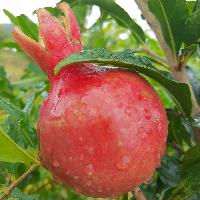Resumen
-
Background. The worldwide market and consumption of pomegranate fruit (Punica granatum L.) has grown considerably, due to its nutraceutical properties, with a high antioxidant content, generating favorable effects for human health. In Colombia, some semi-commercial crops are reported in the departments of Boyacá, Huila and Valle del Cauca. However, it is unknown about its productive behavior, management practices, physiology, development of the phenological stages and pomological characteristics of fruits of native genotypes. Objective. Conduct a review of the aspects related to the crop of pomegranate, analyze possible limitations for its production in Colombia and present information on the pomological characteristics of pomegranate plants grown in home gardens in two regions of Colombia. Methodology. Information was collected from documentary sources related to recommendations applicable to pomegranate cultivation in Colombia. A pomological characterization of fruits of native genotypes from two different agro-ecological zones of the national territory was made. Results. Native genotypes have similar pomological characteristics, but differ considerably from commercial genotypes, the latter being superior in accordance with market requirements for export. Implications. The low technical knowledge on the part of the farmers allows that there are deficiencies in the management of limitations of this crop. Conclusions. The recommendations set forth, complemented with pomological characterization, generate knowledge that can be implemented by producers in Colombia. More research is required if the crop is to be projected as a promising economic alternative to the region.
